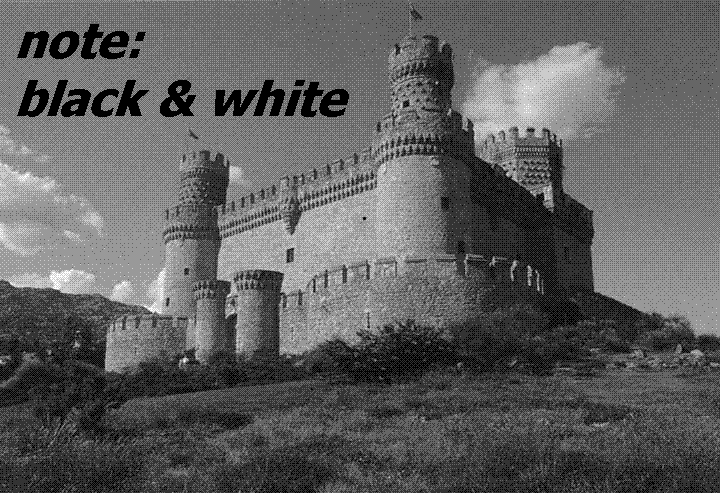Just for a change – here’s a picture. It starts with a black and white photo of a castle wall.
When the black spot appears in the centre, concentrate on it until the picture of the castle reappears and, as long as you don’t move your eyes, it’ll appear to be in colour.
Now, you’ve probably seen this before (I certainly have) but most places I’ve seen it in the past don’t bother to explain what’s going on.
What’s happening is a process known as chromatic adaptation. If you expose your eyes to a single colour for a period of time, they eventually lose saturation of that colour, causing the complementary colours to appear as an illusionary image when you look away. Basically your brain starts to over-compensate for the saturated colours, so when they’re not there any more the image you see swings too far the other way, into the complements of those colours until you change your focus point.
The colours surrounding the black dot in the image above form the complements (opposites) for the correct colours for the photo, so when they are taken away the over-compensation makes the picture look as though it is in colour.
The same thing on a simpler level is going on in the image below (look at it for 30 seconds and then look at something white).
I don’t know the original sources for either of the pictures incidentally, but I picked them up from My Confined Space and Cool Optical Illusions.




0 Responses
Stay in touch with the conversation, subscribe to the RSS feed for comments on this post.